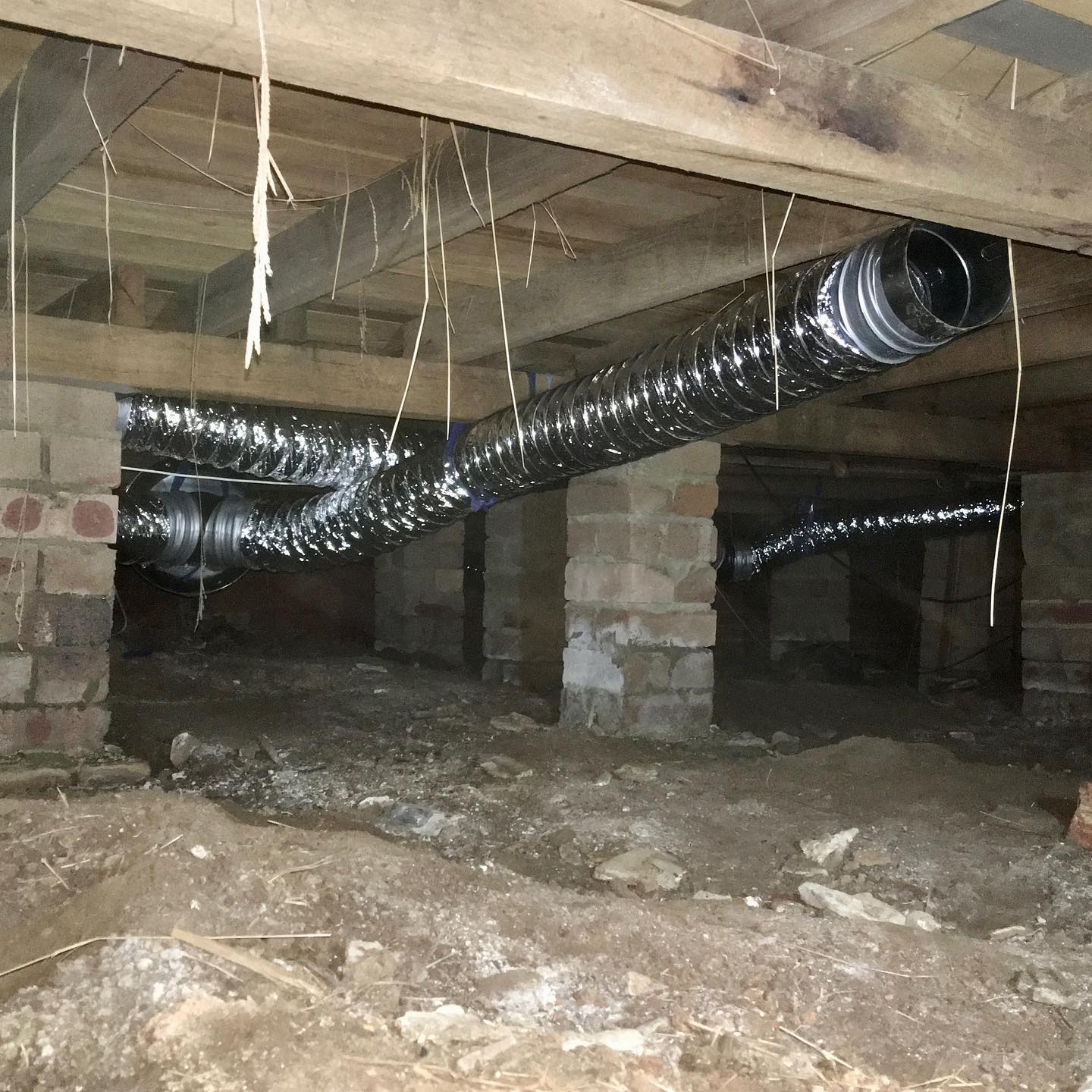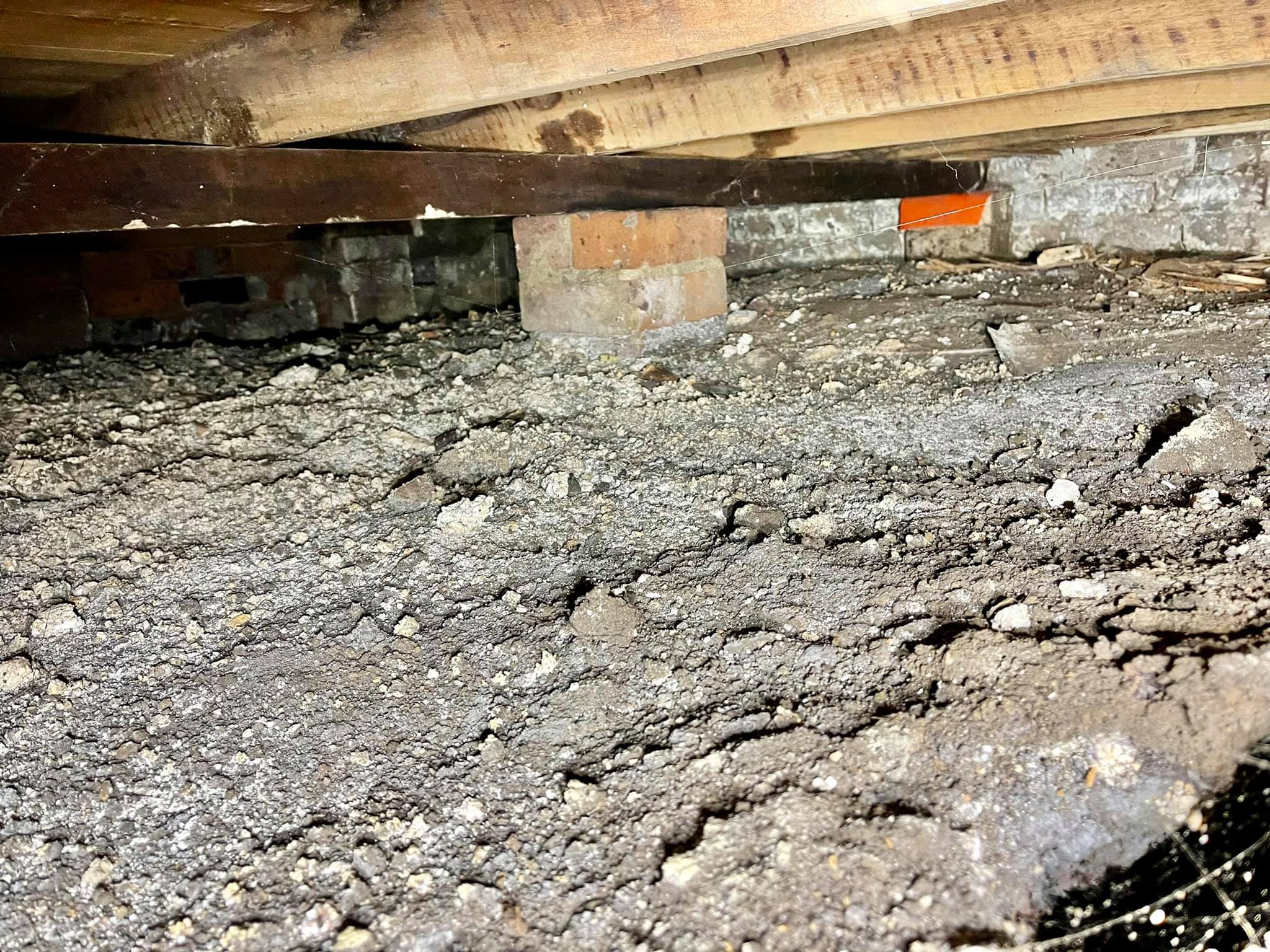


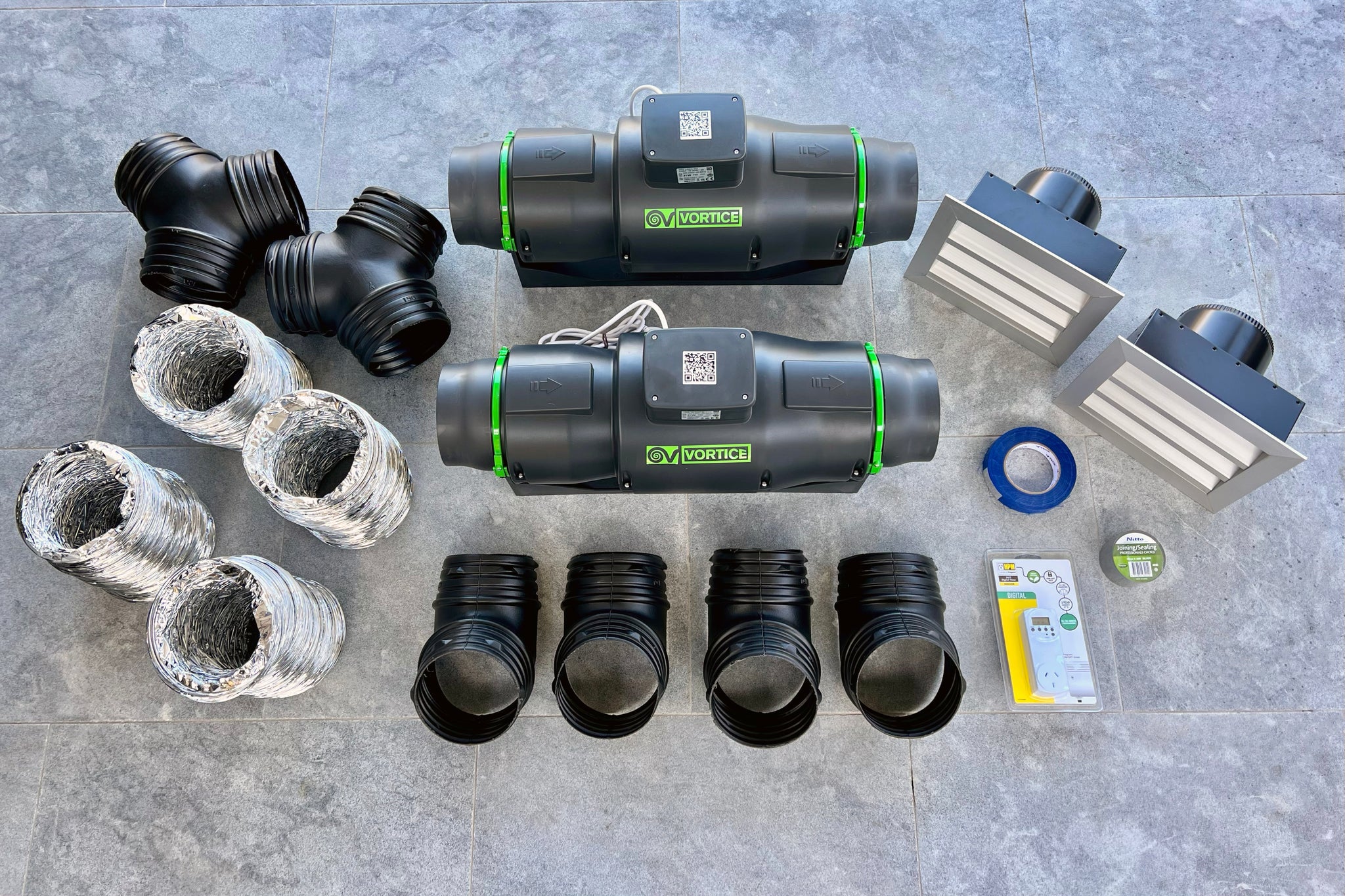


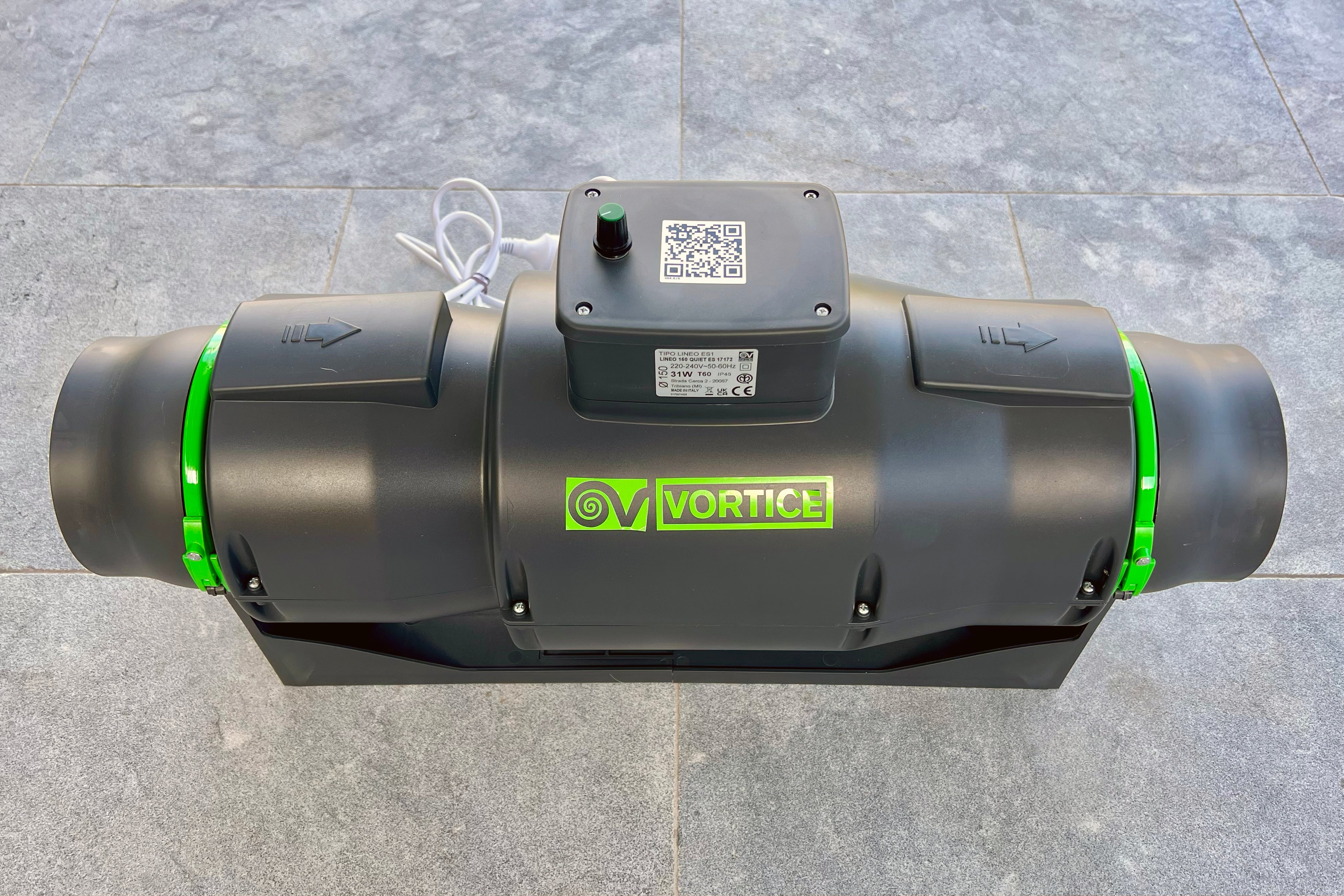







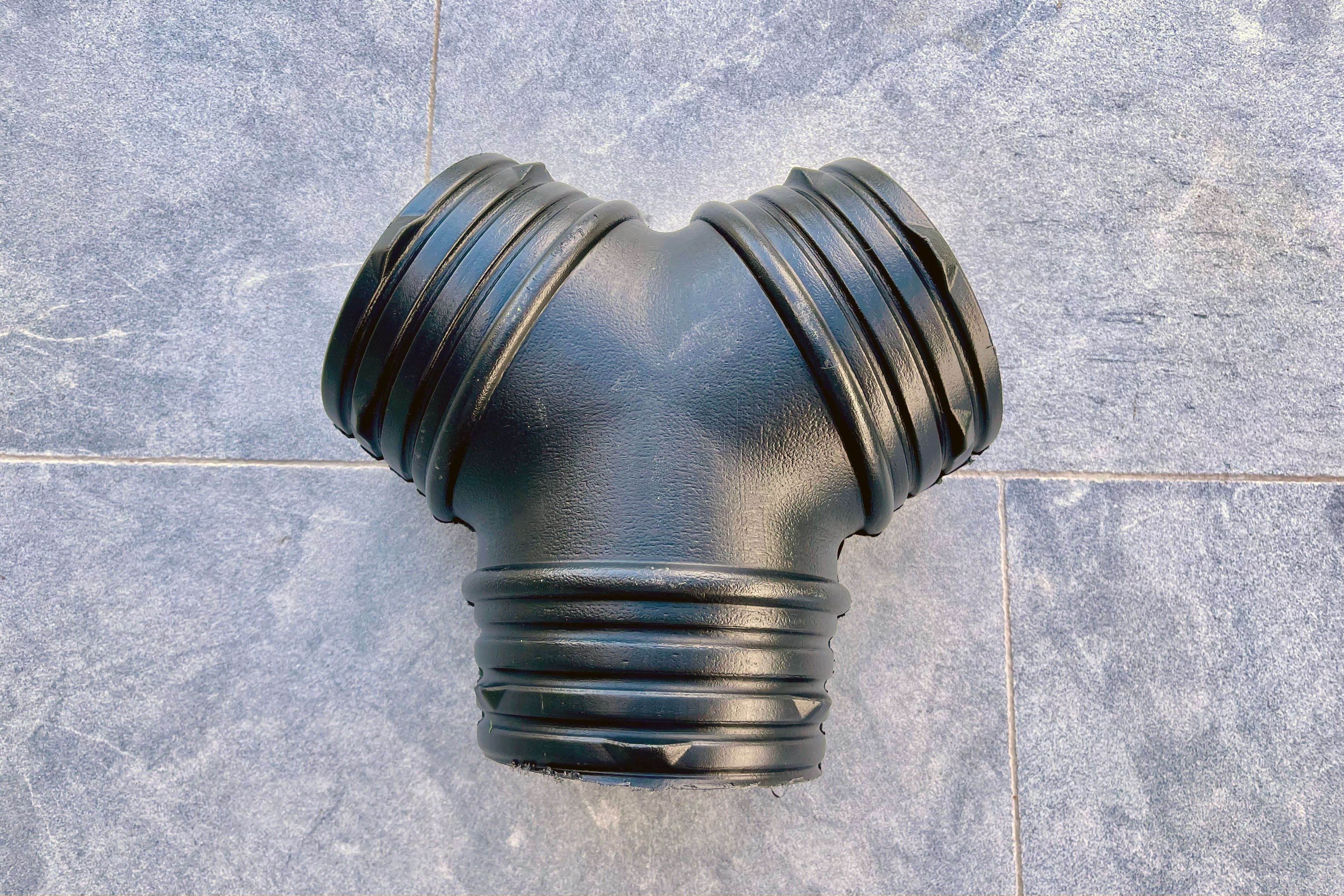

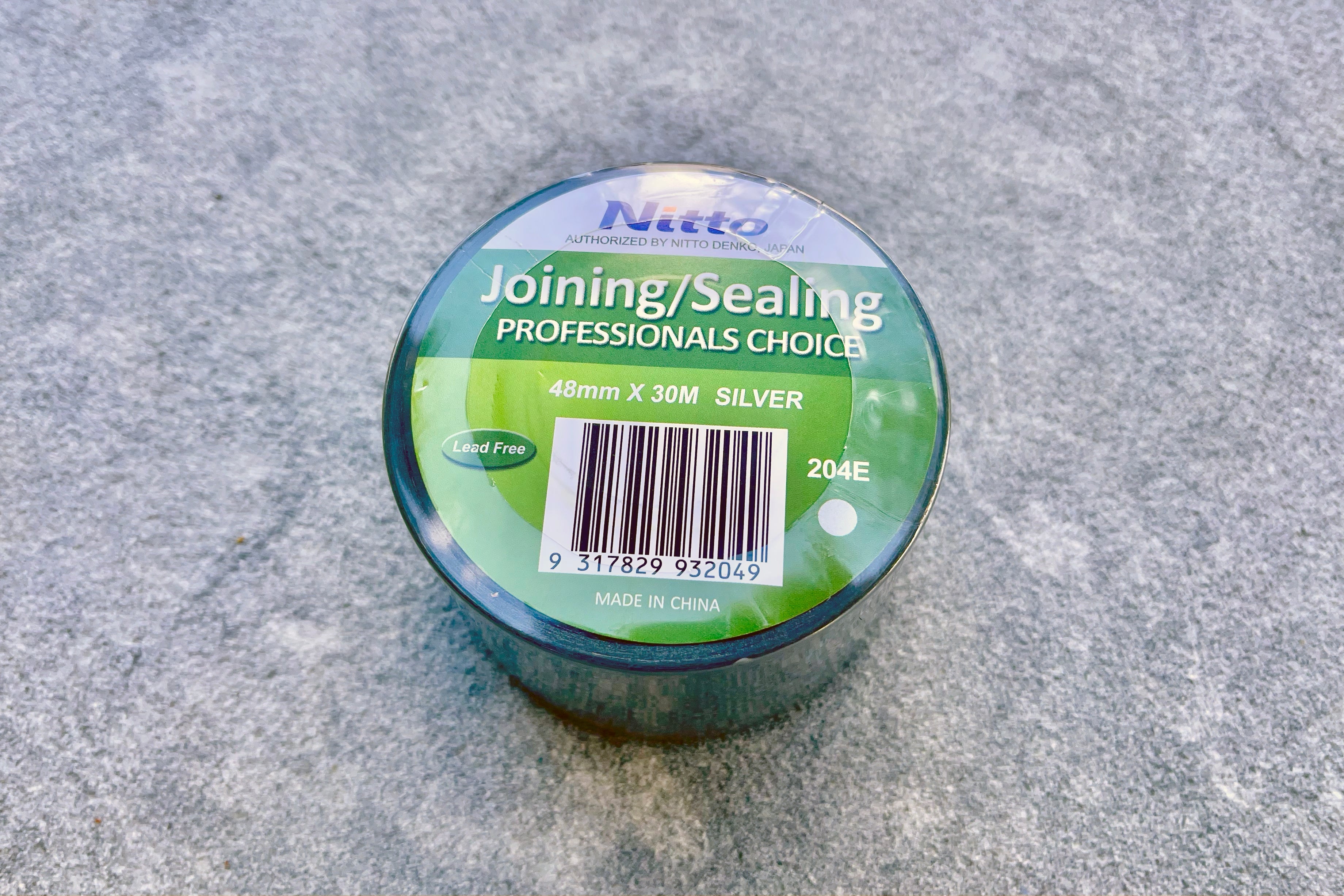


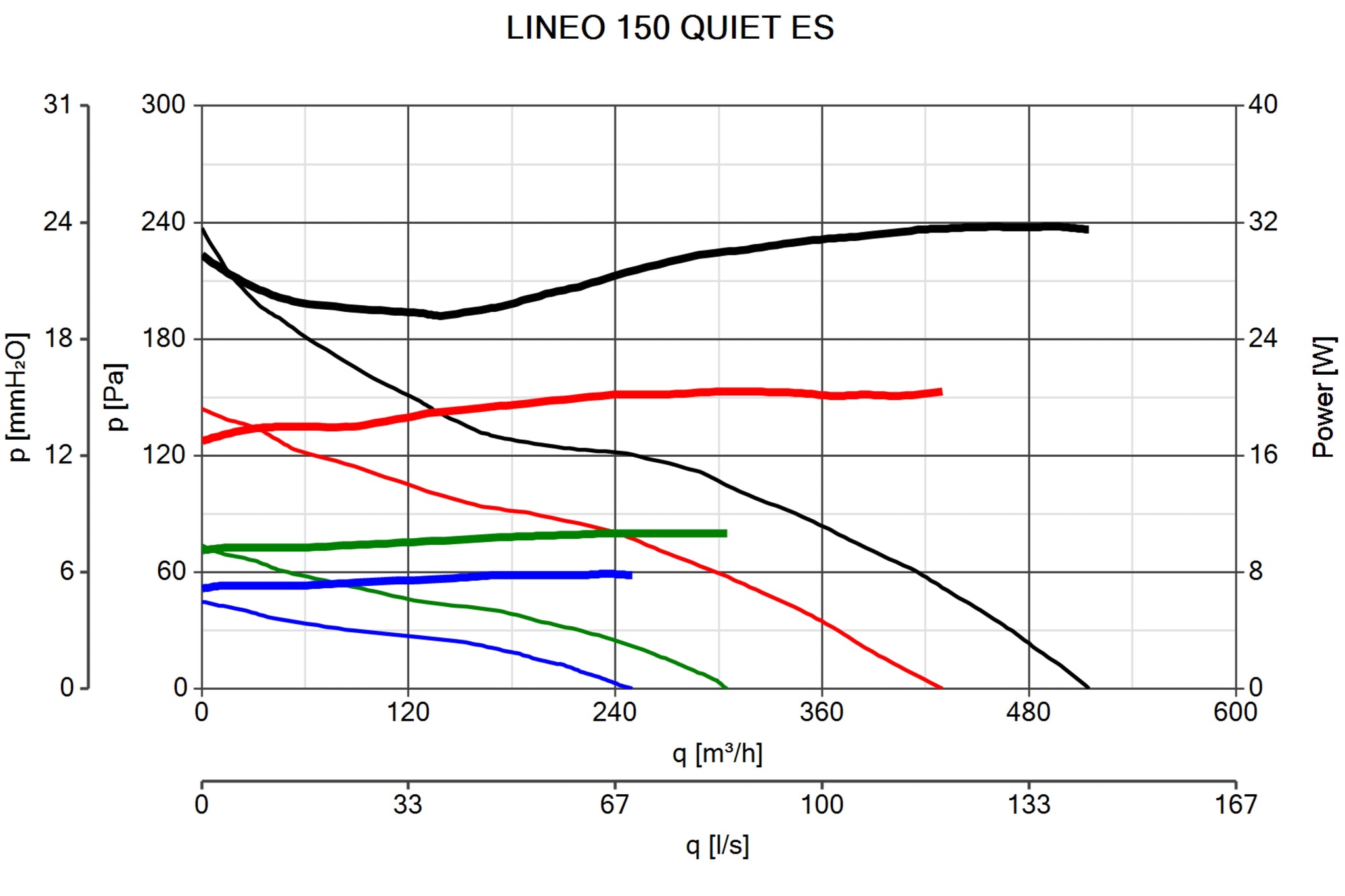
Super Quiet Energy Saving Sub Floor Ventilation Kits (EC Motors)


Let customers speak for us
System Sizing
The following table outlines useful information, such as quantities of included items and coverage area, for each of our sub floor ventilation kits.
Additional quantities of individual items can be purchased in our store.
These are our Super Quiet Energy Saving Sub Floor Ventilation Kits (EC Motors). They come at a premium price because they use exceptionally quiet and well engineered Italian made fans. We recommend them when noise (or lack of it) is the most important concern.
If you would like a more affordable kit that replicates our professional installation service, please see our more popular sub floor ventilation kits with premium German made AC motors.
Sub Floor Ventilation Kits with AC Motors1 Fan Kit
2 Fan Kit
3 Fan Kit
90 m2
180 m2
270 m2
1
2
3
1
2
3
1
2
3
12 m
24 m
36 m
1
1
1
1
2
3
2
4
6
2
4
6
30 m
30 m
60 m
50 m
50 m
50 m
Yes
Yes
Yes
Yes
Yes
Yes
Yes
Yes
Yes
Yes
Yes
Yes
Components

150mm Super Quiet Energy Saving Fan
This is the motor. Depending on the way it's faced, it can either pull air out or push air in. It is suspended in your sub floor area by hanging strap so that vibrations can't be transferred through the structure.
150mm Splitter
This is connected to the fan via ducting and splits one airstream into two, giving you more coverage per fan motor.
150mm V-Flex Duct
This flexible duct is made in Australia and joins all of the components of the system together. It is much stronger than standard flexible duct.
Anodised Aluminium Weatherproof Grille and Back Box for Duct Connection
This grille is installed in your external wall. It is the exact size of two bricks (or can replace existing terracotta vents which are easily removed). The black box fits snuggly in the wall, allowing duct to be connected securely so that there are no leaks, and does not require mortar to be redone after installation. It is connected to the fan via ducting.
150mm Duct End Caps
These end caps are installed after the splitter, at the end of each open duct. They provide a solid opening to fasten to, so that duct cannot deteriorate over time, or be sucked back in on itself. They also provide a secure point for fastening off to the structure.
Fan Specifications
Specifications
- Suitable for commercial use.
- Enclosures made of fire resistant plastic resin.
- Casing integrating a sound-absorbing coating, optimised to minimise sound emissions radiated into the environment and transmitted through exhaust and supply ducts.
- High water resistance: IPX5.
- Equipped with a thermal fuse overheating safety device.
- Speed adjustable through optional potentiometer (0-10V signal).
- Long life 30,000 hour motor.
- Double insulated housing (does not require an earth).
- Made in Italy.
- 2 Year Warranty.
Dimensions
- 232mm width (A).
- 320.6mm height (B).
- 685mm length (C).
- 147mm duct attachment flange diameter (D).
- 5.4kg weight.

100% Speed (10V)
- Maximum absorbed power: 31 W.
- Maximum delivery: 515 m³/h.
- Pressure max: 237.3 Pa.
- RPM: 2,030.
- Sound pressure Lp 3m breakout: 31 dB(A).
80% Speed (8V)
- Maximum absorbed power: 20 W.
- Maximum delivery: 430 m³/h.
- Pressure max: 144.2 Pa.
- RPM: 1,700.
- Sound pressure Lp 3m breakout: 26 dB(A).
60% Speed (6V)
- Maximum absorbed power: 10.6 W.
- Maximum delivery: 305 m³/h.
- Pressure max: 73.6 Pa.
- RPM: 1,240.
- Sound pressure Lp 3m breakout: 18.6 dB(A).
40% Speed (4V)
- Maximum absorbed power: 7.7 W.
- Maximum delivery: 250 m³/h.
- Pressure max: 45.1 Pa.
- RPM: 1,015.
- Sound pressure Lp 3m breakout: 13.7 dB(A).
FAQ
AC motors are cheaper than EC motors but still provide excellent performance. They are very quiet during operation and move large volumes of air through ducting. They operate at one fixed speed where they are most efficient.
In real world use, EC motors provide even higher air flow, are extremely quiet during operation, are capable of silent operation at reduced fan speeds, have smoother fan rotation, and consume almost no power at reduced fan speeds. EC motors have adjustable speed and are very efficient at all speeds.
An electronically commutated (EC) motor is designed to run on an alternating current (AC) power supply, but it in fact bears a closer resemblance to a direct current (DC) motor. It is essentially a permanent magnet, brushless DC motor that incorporates on-board electronics. The added electronics allow an EC motor to combine the best features from both AC and DC motors, and then improve on them. For this reason, an EC motor is in a category of its own.
By utilizing this technology, EC fans are highly efficient and pay for themselves through lower operating costs and extended service life. They also provide many operational benefits that are often overlooked.
EC motors use permanent magnets and electrical windings to generate their magnetic fields, in a similar fashion to brushed DC motors. However, as their name suggests, they achieve commutation electronically rather than mechanically. This is only possible by incorporating on-board electronics within the housing of an electronically commutated EC motor.
The on-board electronics include a rectifier that converts the AC supply to DC. An integrated controller then directs the right amount of current, in the right direction, at the right time, through each of the windings. This develops magnetic poles in the stator, which interact with the permanent magnets in the rotor.
The position of each magnet is determined by using Hall effect sensors. The appropriate magnets are attracted, in sequence, to the magnetic poles in the stator. Simultaneously, the rest of the stator windings are charged with the reverse polarity. These attraction and repulsion forces combine to achieve rotation and produce the optimal torque. Since this is all done electronically, precise motor monitoring and control are possible.
Energy Efficiency
EC motor efficiency is often above 90%, allowing EC fans to consume up to 70% less energy, when compared to conventional fans. Running an EC fan at 80% speed saves nearly 50% of the energy.
Ease of Control
By continuously monitoring motor functions and automatically adjusting the control input, high efficiency is maintained throughout the operable speed range. EC motors are often capable of being turned down to 20% of full speed, while still maintaining 85% efficiency. Sensors that produce a 0-10V signal provide speed control without the need for a complex variable frequency drive.
Versatility
EC motors are capable of exceeding rated speeds. This allows fans with EC motors to achieve higher capacity within a smaller fan package.
EC motors are variable speed motors. They have a 0-10V potentiometer mounted on them to adjust their speed precisely between 0% and 100%.
Single Speed
Plug and play operation in a standard power point or socket outlet.
By default, the fan operates at one fixed speed (100%).
A switch can be installed for 2 speed operation (requires an electrician).
2 speed operation can be customised (at time of installation) with adjustable min and max speeds.
0-10V Variable Speed Controller
Plug and play operation in a standard power point or socket outlet.
Includes a 0-10V potentiometer for infinitely variable speed control.
0-10V potentiometer can be removed from the fan and extended for remote installation elsewhere.
Super quiet energy saving EC motors have a maximum capacity of approximately 515 m³/h.
Super quiet energy saving EC motors draw 31 W when running at 100% speed.
Super quiet energy saving EC motors make 31 dB(A) noise (3m breakout) when running at 100% speed.
Maximum absorbed power: 31 W.
Maximum delivery: 515 m³/h.
Pressure max: 237.3 Pa.
RPM: 2,030.
Sound pressure Lp 3m breakout: 31 dB(A).
Maximum absorbed power: 20 W.
Maximum delivery: 430 m³/h.
Pressure max: 144.2 Pa.
RPM: 1,700.
Sound pressure Lp 3m breakout: 26 dB(A).
Maximum absorbed power: 10.6 W.
Maximum delivery: 305 m³/h.
Pressure max: 73.6 Pa.
RPM: 1,240.
Sound pressure Lp 3m breakout: 18.6 dB(A).
Maximum absorbed power: 7.7 W.
Maximum delivery: 250 m³/h.
Pressure max: 45.1 Pa.
RPM: 1,015.
Sound pressure Lp 3m breakout: 13.7 dB(A).
232mm width (A).
320.6mm height (B).
685mm length (C).
147mm duct attachment flange diameter (D).
5.4kg weight.
The fan motors are manufactured by Vortice in Italy.
Vortice Lineo 150 Quiet ES.
The fan motors and housings are made in Italy.
The fan motors have a 2 year warranty.
Super quiet energy saving EC motors have a protection rating of IP 45.
While we are firm believers in the benefits and need for solar (we have 21kW of it on our roof), unfortunately solar sub floor ventilation fans do not work.
Solar sub floor ventilation systems typically use very low wattage axial fans. Axial fans don't cope well with pressure, which means when ducting is installed airflow volume is severely reduced.
Solar sub floor fans are very noisy. On the numerous occasions we have installed them (against our recommendation) the biggest complaint received has been the noise!
Lastly, solar sub floor ventilation fans don't work well when it's cloudy, overcast, or raining - they often don't work at all on such days! Unfortunately, this is when you need them the most!
Mechanical sub floor ventilation means there is a powered fan motor present to move air around. The alternative, passive sub floor ventilation, relies on free air movement through gaps and openings.
Passive sub floor ventilation includes any form of opening in the external walls of your sub floor area, such as weep holes, terracotta vents, wire mesh vents, and doors.
Passive sub floor ventilation is not effective if you are experiencing a mould and damp problem in your sub floor area. This is because it does not guarantee movement and exchange of air.
Cross-flow ventilation is nearly always impossible without mechanical subfloor ventilation. Air is lazy, so you can bet on it taking the path of least resistance. That’s why air always takes the easy way out as it moves through a sub floor space (assuming it even enters through restrictive passive vents in the first place). It’s much easier for air to pass through a large open section near the point of entry than to flow around multiple corners into small closed-off sections.
Having mechanical ventilation extracting stale air from these small closed-off sections creates cross-flow ventilation. This is because Air Out = Air In! Airflow is measured in cubic metres per hour (m3/h). For every cubic metre of stale air that gets drawn out from a space, 1 cubic metre of fresh air must get drawn in to the space. As the fans continually draw air out, fresh air enters through existing openings and works its way through the sub floor area to the point of extraction.
Negative Pressure, Positive Pressure or Balanced Pressure?
Installing the most suitable sub floor ventilation system in your home can help get rid of air pollutants that can harm your health and your family’s wellbeing. Fresh Ventilation offers efficient solutions that can eradicate stale, moist air in the sub floor area and replace it with cleaner, fresher and drier air. We have three different types of ducted sub floor ventilation systems that you can choose from.
All of our systems are available in any of the three pressure configurations – the components don’t change, the way they are installed determines the configuration.
Depending on how your sub floor ventilation fans are installed, they will either blow air into your sub floor area (positive pressure) or suck air out of your sub floor area (negative pressure). If you have two or more fans installed, it is possible for fans to both blow air in and suck air out of your sub floor area (balanced pressure).
Our most popular configuration. The logic behind a negative pressure system is that a greater quantity of stale air is sucked out of the sub floor area than the fresh air that is blown into it. The vacuum conditions created when stale air is continuously sucked out of the sub floor area will be filled by fresh air drawn in from outside.
Importantly, moisture and musty odours can be controlled since air is sucked out at a chosen location. However, the drying performance may be slightly slower than a positive pressure configuration.
A positive pressure system is the opposite of a negative pressure system. A greater quantity of fresh air is blown into the sub floor area using mechanical ventilation, which will as a result force the damp air out.
Positive pressure systems facilitate the drying up of damp or moist sub floor areas because dry air is constantly being blown over them. It can initially be more effective than trying to suck out moist air from damp surfaces. Caution needs to be taken to ensure that passive escape venting is sufficient for the damp air to leave the sub floor area to outside of the home, otherwise the dampness can end up rising into the home above.
Your sub floor ventilation system can be configured as a balanced pressure system, but this needs to be carefully considered and understood before installation. Like any sub floor ventilation system, the key to an effective balanced pressure system is to ensure that it is installed properly.
One or more fans create a positive pressure by blowing dry and fresh air into the sub floor area. An equal amount of fans work using negative pressure to expel the same amount of stale and moist air from the sub floor area. It is balanced because the speed at which the air moves into and out of the sub floor area is the same.
Why Sub Floor Ventilation is Important
Many pest and building inspectors recommend sub floor ventilation to reduce termite risk. These systems are very effective in homes that experience a continuing musty odour or where there is mould on shoes and clothes in wardrobes or on furniture in living spaces.
Your sub floor area may seem insignificant because it does not form part of your living room. However, the fact of the matter is that this space actually has a high impact on the quality of air you breathe in while you are indoors and may affect your health. Poorly ventilated sub floor areas are often damp. This dampness can result in mould, mildew, musty odours, wood rot and pest infestation in your sub floor area and can also contribute to the spread of mould, mildew and allergies above.
Sub floor ventilation can remove ground moisture from underneath raised floors, creating a drier and warmer sub floor area.

Types of Sub Floor Ventilation
Fresh Ventilation supplies and installs a range of efficient and technologically superior sub floor ventilation products. Our systems utilise the latest in ventilation technology, with Australian made components and German made AC or EC motor centrifugal fans by ebm-papst.
These are the kits you're looking at now! These systems are far superior, have numerous advantages, and use inline fans and duct, which is installed within the sub floor space.
Our own exclusive design, based on years of experience and trialling competing products. This system uses ducting and centrifugal fans and can be installed in almost any sub floor area.
These systems use wall-mounted fans. Generally, nothing is installed within the sub floor space.
Fresh Ventilation do not recommend or install wall-mounted sub floor ventilation products unless no other alternative is available. Wall-mounted systems have substantial limitations by design and mostly use inferior and noisy components further limiting their usefulness.
When access to a sub floor area is not possible, it may be possible to install wall-mounted fans. In this situation, the limited ventilation provided is better than none. Ask us how we can help if this applies to you.
While we are firm believers in the benefits and need for solar (we have 21kW of it on our roof), unfortunately solar sub floor ventilation fans do not work.
Solar sub floor ventilation systems typically use very low wattage axial fans. Axial fans don't cope well with pressure, which means when ducting is installed airflow volume is severely reduced.
Solar sub floor fans are very noisy. On the numerous occasions we have installed them (against our recommendation) the biggest complaint received has been the noise!
Lastly, solar sub floor ventilation fans don't work well when it's cloudy, overcast, or raining - they often don't work at all on such days! Unfortunately, this is when you need them the most!
Passive sub floor ventilation includes any form of opening in the external walls of your sub floor area, such as weep holes, terracotta vents, wire mesh vents, and doors.
Passive sub floor ventilation is not effective if you are experiencing a mould and damp problem in your sub floor area. This is because it does not guarantee movement and exchange of air.
Cross-flow ventilation is nearly always impossible without mechanical subfloor ventilation. Air is lazy, so you can bet on it taking the path of least resistance. That’s why air always takes the easy way out as it moves through a sub floor space (assuming it even enters through restrictive passive vents in the first place). It’s much easier for air to pass through a large open section near the point of entry than to flow around multiple corners into small closed-off sections.
Having mechanical ventilation extracting stale air from these small closed-off sections creates cross-flow ventilation. This is because Air Out = Air In! Airflow is measured in cubic metres per hour (m3/h). For every cubic metre of stale air that gets drawn out from a space, 1 cubic metre of fresh air must get drawn in to the space. As the fans continually draw air out, fresh air enters through existing openings and works its way through the sub floor area to the point of extraction.
Ducted Sub Floor Ventilation Systems
Fresh Ventilation supplies a range of efficient and technologically superior ducted sub floor ventilation products. Our systems utilise the latest in ventilation technology, with Australian made components and Italian made EC motor mixed flow fans by Vortice. Ducted sub floor ventilation systems have significant advantages:
Duct can be run to problem areas.
The ability to have multiple pickup points means coverage is far greater.
Smart design can achieve excellent cross-flow ventilation.
Stale air can be drawn from deep in the sub floor area.
Premium mixed flow fans with centrifugal impellers are much quieter than most wall-mounted fans and outperform axial wall-mounted fans in a ducted system.

What Makes Fresh Ventilation Different
Fresh Ventilation is a family owned and operated business. Our main business has specialised in the installation of premium quality ventilation systems for over 10 years. Our sub floor ventilation kits use the same premium components we install in our business on a daily basis.
Effective sub floor ventilation requires quality components and proper installation. Given that no two sub floor areas are the same, there is no one-size-fits-all solution to sub floor ventilation. This is why we place a strong emphasis on customised solutions and after-sales support to help you with installing your system.
Our focus is on premium products and expert advice to create ventilation systems that actually work.
All of our kits include:
Personal installation maps tailored to your sub floor area.
One-on-one conversations to help us understand what is going on and recommend how best to solve it.
One-on-one telephone and/or FaceTime conversations to help you with installing your system.
Installation photos and videos outlining best practices and things to avoid.

Why Premium Components and Proper Installation Matter
Fresh Ventilation supplies a range of efficient and technologically superior sub floor ventilation products. Our exclusive design is based on years of knowledge, experience and trialling competing products.
Not all components are equal!
System Design
Instead of using a single larger fan, we use smaller fans but more of them.
More fans allow greater coverage, better efficiency and more extraction points.
A single larger fan makes more noise, uses more power and requires longer duct runs to cover the same area as two smaller fans. This is inefficient and leads to uneven duct lengths and subsequently uneven air flow.
Our smaller fans use the same size ducting as our exhaust grilles and we allow one exhaust grille per fan. This allows air to be freely exhausted without a reduction in air flow due to pressure buildup.
Larger fans need reducers to reduce the duct size so that they can be connected to exhaust grilles. This results in a reduction of air flow due to resistance.
When comparing our systems against other systems with the same suggested coverage areas, our kits include more fans, more duct, more extraction points and more exhaust grilles.
Our systems are designed to properly ventilate your sub floor area.
Our kits include the necessary components and advice to do the job properly the first time.
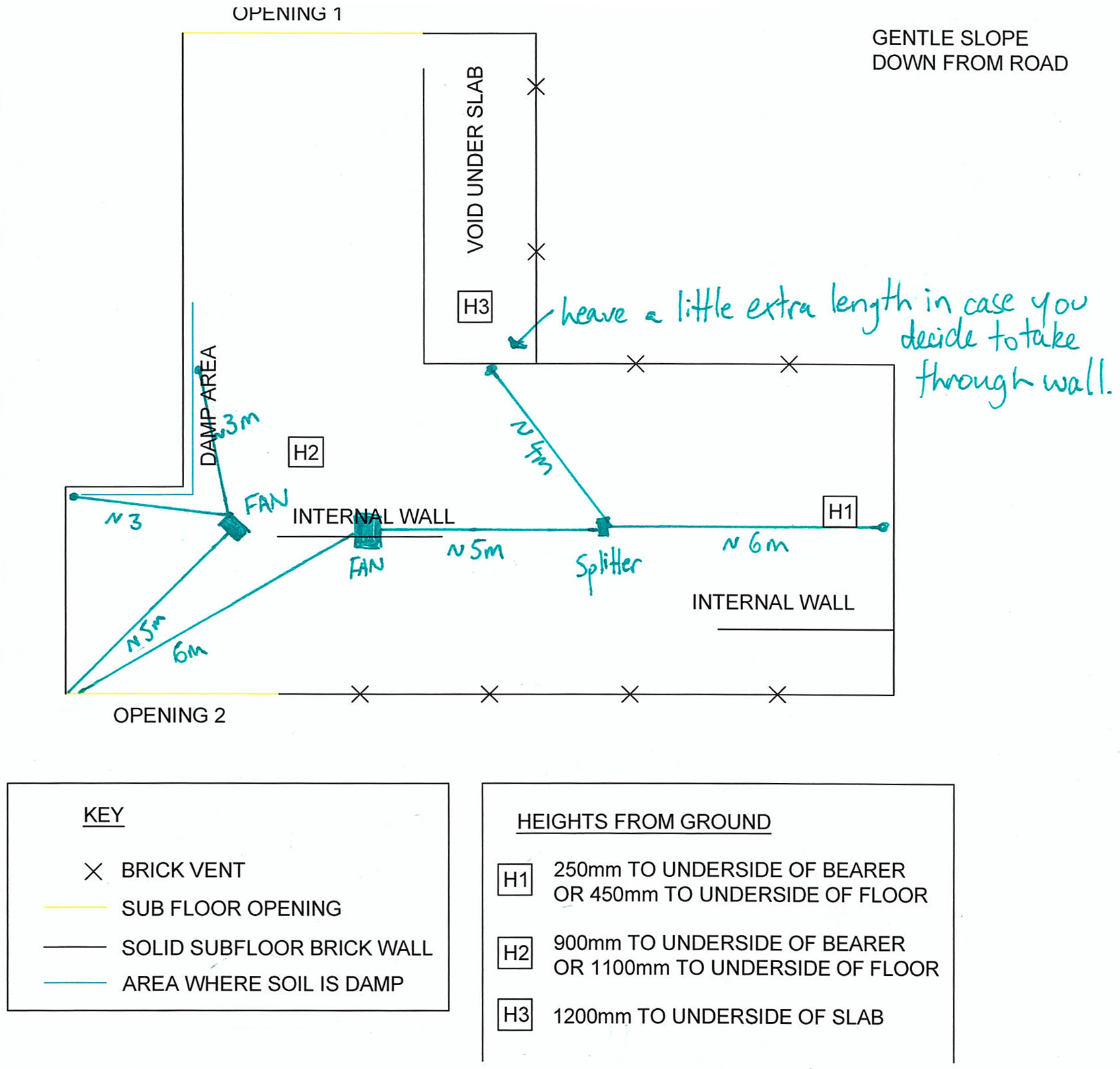
Fans
Our 150mm super quiet energy saving EC motor mixed flow fans have a capacity of 515 m³/h.
The variable speed EC motor consumes a maximum of 31 W when running at full speed.
The variable speed EC motor makes a maximum of 31 dB(A) noise (3m breakout).
Our fans make less noise and use less power. Some larger fans use 193 W when operating and have less capacity than two of our smaller fans.
Our super quiet fans have a 2 year replacement warranty.

Timer
Our digital timer has a battery backup. It won't lose time and start running in the middle of the night.
Our digital timer can be programmed differently on different days of the week. This is ideal when you want different operation on the weekends.
Duct
Our duct is manufactured in Australia from two layers of high grade metallised polyester bonded together with fire rated resin encapsulating spring steel wire.
Our duct is not prone to tearing or unravelling like single layer competing products.

Exhaust Grilles
Our exhaust grilles are anodised aluminium, not plastic.
Our grilles are weather proof and have a rodent proof mesh behind them.
Our grilles are easy to install since they replace two standard bricks. The back box fills the hole left after removing two bricks and the anodised grille clips into the back box and covers any gaps with a 25mm flange. They don't require partial removal of bricks to create a round hole.
The back box fits snuggly in the wall, allowing duct to be connected securely so that there are no leaks, and does not require mortar to be redone after installation.


Our 150mm super quiet energy saving EC motor mixed flow fans have a 2 YEAR WARRANTY. All other components have a 5 year warranty.








